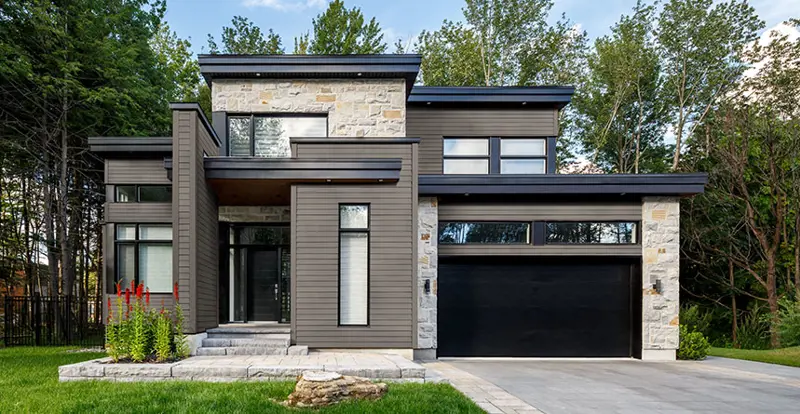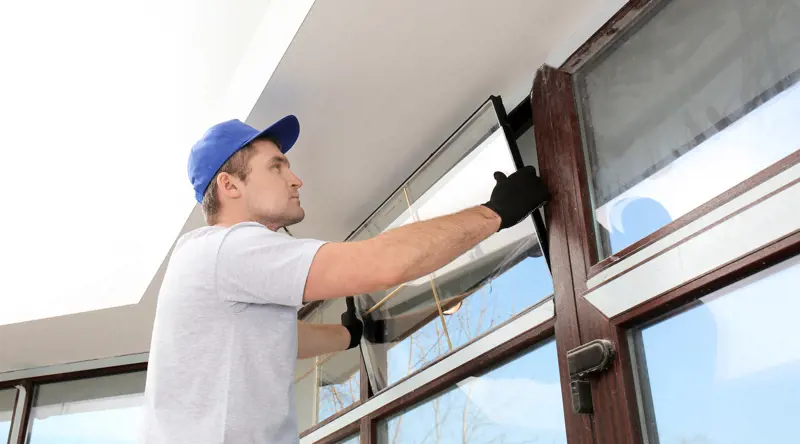
Are Single-Hung Windows More Efficient Than Sliding Windows?
There are many factors that influence the energy-efficiency of your home. Windows are one element of our homes that often go overlooked but actually play a huge role in maintaining or improving energy-performance and comfort. Choosing the right windows is the beginning of the journey towards a thermally efficient house.
Out of the many styles of windows, single-hung and sliding windows are two similar options that are quite popular. It can be a challenge to make a final decision that will last for so many years. Before you choose your windows, consider the differences in function and the pros and cons we've included in this post. Deciding which style makes the most sense for your walls should be much easier after reading this comparison.
Use the links below to skip ahead in this post:
- Single-Hung Windows vs Sliding Windows
- Are Single-Hung Windows More Energy-Efficient Than Sliding Windows?
- Should I Get Double-Hung or Sliding Windows for My Home?
- Pros and Cons of Single-Hung Windows
- Pros and Cons of Sliding Windows
Single-Hung Windows vs. Sliding Windows

Single-hung windows are vertically-oriented with two sashes, each inside a frame. The top sash is fixed while the bottom sash is able to move up and down. Mobility in single-hung windows makes them ventilating units, they allow you to air out your home or bring in a nice breeze.
Modern single-hung and double-hung windows can be raised and lowered easily because of advanced counterbalancing systems (window balance). Because there are many moving parts in the window and the sashes also are also set in the jamb, the window sashes are made small enough to be easily removed. Without a removable sash repairs to the balance would be impossible. Unfortunately, that bit of wiggle room can vary across manufacturers and is a weak point against air infiltration. Air infiltration is a contributing factor to a window unit's energy efficiency. You can learn more about a window's energy-efficiency ratings on NFRC labels.
Sliding windows function similarly to hung windows but are oriented horizontally instead of vertically. Unlike hung windows, sliding windows don't operate against the pull of gravity so they don't require counterbalance systems. This style still has two sashes, but they are usually wider than hung windows. The sashes in sliding windows glide across tracks that run along the top and bottom window unit. Sliding windows often open much smoother than hung windows since they can have rotating runners on the top and bottom tracks. The operation of the window depends on how it is configured, with sliding style windows there are several options (depending on the constraints of the vendor, of course).
- Single-slider: One fixed sash and one operable sash, you decide which sash is fixed
- Double-slider: both sashes are operable
- Triple-slider: Operable sash + fixed sash + operable sash
See examples of single-hung and sliding windows available from Brennan Enterprises.
Are Single-Hung Windows More Energy-Efficient Than Sliding Windows?
Single-hung and sliding windows generally have the same amount of energy-efficiency. Neither one of these styles are as weathertight as a fixed window or a casement window but they do offer their own set of benefits. And remember, because the sashes on these window styles operate within the jambs they need some wiggle room for ease of operation, too snug and the window sash becomes more difficult to open.
The best way to compare efficiency is to build out a window and look at the NFRC ratings. Also, keep in mind that there are multiple factors that will influence the ratings including the type of glass that is used. A professional window retailer or contractor can help you navigate the process where permitting requires that your windows meet certain energy performance criteria↗.
Should I Get Single-Hung or Sliding Windows for My Home?
Use the pros and cons detailed below to determine which window style makes most sense for your home.
Pros and Cons of Single-Hung Windows
Single-hung windows might not be your most energy-efficient consideration, but they do have plenty of other aspects to help them stand out from the crowd.

- Single-hung windows fit nicely within most architectural building styles.
- Hung windows are extremely popular and thus have the most customization options.
- Single-hung windows are a useful space-saving option as they operate within the wall rather than opening outward.
- Their popularity means they are widely available and affordable.
- They do not increase ventilation as much with only one mobile panel.
- The bottom sill collects dust quickly.
Pros and Cons of Sliding Windows
Sliding windows aren't only easy to open. Here are some other considerations to take into account when comparing the two.

- Sliding windows with two mobile sashes help increase ventilation.
- The mechanics of a sliding window makes them easier to open.
- Sliding windows can fit into larger spaces and thus allow more natural light inside.
Cons
- Sliding windows are not energy-efficient.
- The bottom sash tends to collect dust quickly.
- The gap between seals allows the window to rattle in storms or when installed next to heavy traffic.
Choosing a window that fits into your opening and suits your customization needs can be a challenge. With two versatile and well-loved options to choose from, you may need help to make the final decision. Call your local window pro today to talk about your window replacement project, if you're located in North Texas that's us— Brennan Enterprises!
Oops!
We don't currently serve your area but do want to help you plan your project. Try our Build & Price tool to get an idea of window & door costs within DFW. Your area may be higher or lower but at least you'll have some idea of the price.
Thanks for stopping by.







